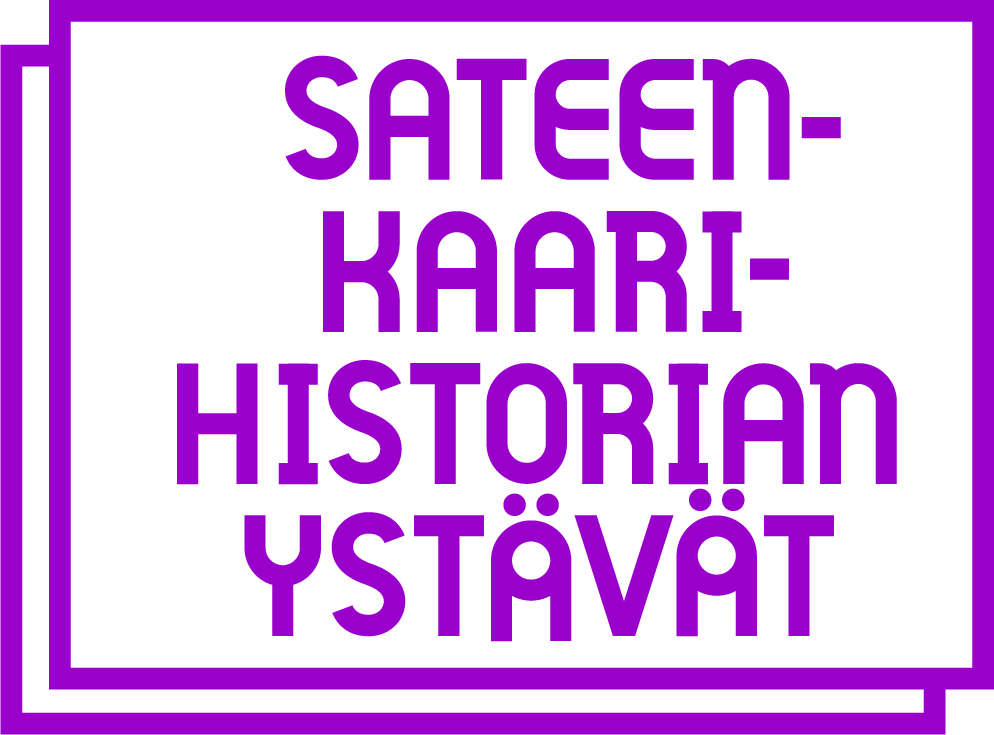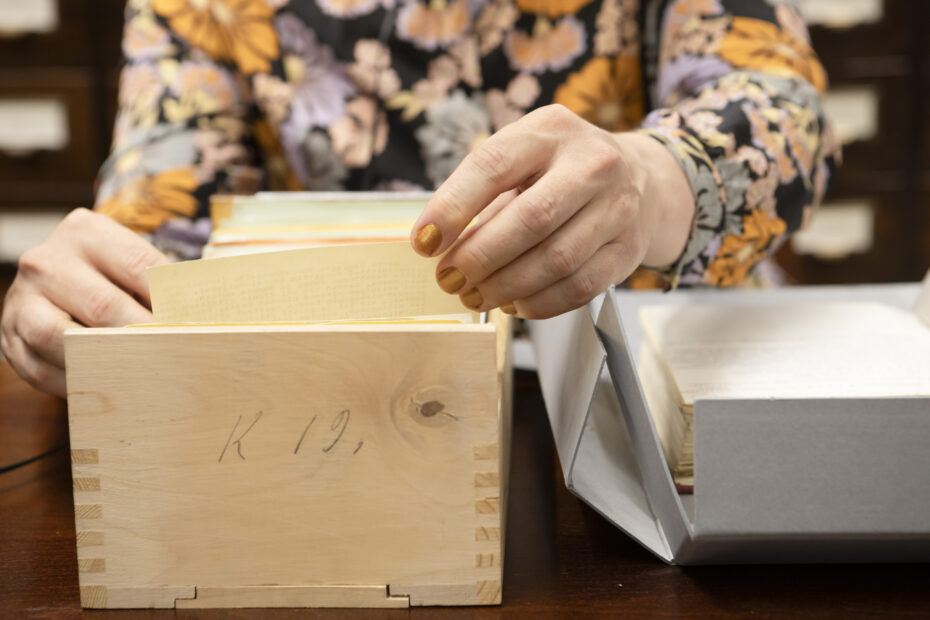(Photo: Finnish National Gallery / Pirje Mykkänen)
I first read the note on Erika in Jan Löfström’s book Sukupuoliero agraarikulttuurissa (‘Gender differences in agrarian culture’) in 2019. At the time, I was taking part in the ‘Archive Transformed’ residency at Denver University, together with researcher Riikka Taavetti. Taavetti and I were familiarising ourselves with archive materials that we had collected relating to Finnish LGBTQ+ history. We had also brought with us some research publications which included references to the material that we had put together.
I remember how the note on Erika stopped me in my tracks, how I immediately re-read it. I read the sentence that Malmgren had written down:
“She was pleased when she was called Erika, but upset when she was called Kustaa”
and I compared it to Löfström’s analysis, in which he repeatedly refers to Erika as “Kustaa of Jakova”. I noticed I felt upset.
Erika is preserved as a mention in the archive
I wrote the play ‘The Lovely Daughter Erika – Notes on a name’ (2023) based on a local story found in the folk poetry collection of the Finnish Literature Society, and on a number of research publications that discussed the note or otherwise referred to it. In the play, I study questions of ethics and remembering in historical study, in the context of trans history.
The local story that mentions Erika was, as far as I’m aware, first published in an anthology about “Finnish village idiotism”. Since then, the story has been reprinted in three different historical studies which deal with marginalised groups. The local story has also been mentioned further in blogs online, which I ultimately chose not to include in the play.
By reading the research literature and by interviewing the writers, I wanted to study how local stories have previously been used in historical research. I wanted to look at how prior discourse and research literature has influenced the ways in which researchers have used the note on Erika in their own work.
The play would not have been possible without the generous input of its participating researchers, Pekka Laaksonen, Jan Löfström, Pälvi Rantala, and Petteri Pietikäinen. They all very kindly gave up their time to both commit to the interviews and then later to read through the abridged transcriptions. They obliged to be interviewed on things they had written (in most cases) decades before. I believe that I was allowed to take part in the discourse surrounding historical study due to the good will and trust the researchers showed me, and also through their prior research work.
A historical story or a local story, a chronicle
I directed the premiere of my play at the research hall of the archive of the Finnish Literature Society (SKS), where it was performed from September 1 2023 through to January 24 2024. In the performance, the audience was invited to listen to the play as an audio drama while perusing the original archive materials that the work discusses. Nearing the end of the piece, a video was projected onto a wall of the research hall, played alongside the final section of the audio of the play. The performance was part of the programming of Teatteri Takomo and the Finnish contemporary art museum Kiasma’s theatre, working in collaboration to stage the piece at the archive at SKS.
In this article, I will focus on the play itself and the work that formed its basis.
The play is a fragmentary and assembled representation of the foundational work that the piece is built upon. The play comprises research literature, the recollections of researchers investigated through one-on-one interviews, a further interview at the site of Erika’s last known home in Nummi with Maija Aarnio and her relative Leena Aarnio, both local to the area, and finally, the scant material that I was able to dig up myself in my search for traces of Erika’s life: the parish register of Lohja from 1890-1920, the story about Kustaa Lehtonen in the newspaper Länsi-Uusimaa that celebrated his 60th birthday (August 30 1935) and a historical map of Nummi from 1908, in which the buildings of Erika’s childhood homestead appear red, and the roads and yards are pink.
In some cases I describe searching rather than finding. I explain the methods of use of the SKS archives, only to conclude that they never gave up any more information on Erika. I discover that the archives of the healthcare district of Helsinki and Uusimaa do not make any mention of Erika or her siblings. I mention the natural stone foundation of the last known house that Erika lived in, and I mention the apple trees in the yard. Presumably these are still the same trees.
Malmgren wrote down a story that he had heard long ago
When writing the play, my aim was to quote the source material at excessive length. I believe that by doing this, it is possible to draw attention to the exceptionality of the sources; the ways in which different researchers have read it, and finally, how they have gone on to use the material in their own publications. Additionally, I wanted to preserve in the content of the play things that would normally be relegated to footnotes or excised entirely from published research: for example descriptions of the working process, moments of doubt, or the influence of collegiate networks.
In 1965 Mauno Malmgren wrote down the local story of Erika and sent it in response to a call for the collection of folklore announced in issue #18 (1964) of the magazine Kansantieto (‘Folklore’), published by the Finnish Literature Society (SKS). In the play, the Archivist introduces the call for collection by quoting the original text, which gives instructions on the correct method of collection and submission, and some further prompts to rouse the memories of readers.
ARCHIVIST
The collection operation is titled “Down-and-outs and artists”. It asks, “Do you know stories of people in underappreciated professions? Do you know stories about folk artists?”The invitation to collect states:
“…we would like you to think back and ask around for stories about men and women who have made a living for themselves in any shameful, generally averted or otherwise unusual fashion. The intention is to record stories which illuminate the peculiar fortunes of these individuals, perhaps explaining the reasons for their abjection or otherwise revealing some secret from their pasts.”
and
“- deviant individuals, the imbecilic, and the pathologically eccentric often attract interest, pity, wonder and derision from others. These people have often had the misfortune of being made examples and evidence of human ineptitude.” (Italics are reprinted as they were in the original call for collection)
Her name is Erika
The play’s cast includes a total of nine characters, five of which are based on interviews that I have recorded, transcribed and abridged for clarity. The character of Mauno Malmgren is based on the letters and submissions sent to SKS by Mauno Malmgren. In addition, I present the various materials of the play through the voices of the Archivist, the Narrator, and a further second narrator that has my own first and last names. The play introduces each new character in the following manner:
ARCHIVIST
Malmgren has attached a separate cover letter to accompany his notes, in which he explains a little about his background. The letter is dated December 26 1963.READER OF MAUNO MALMGREN
I am First name Surname and I am reading the part of Mauno MalmgrenMAUNO MALMGREN
“You have now sent me several issues of KANSANTIETO-magazine, but the questions that previous issues have posed have all related to fields that I know nothing about. In your most recent issue, however, there are some queries that I feel I may be able to respond to, even if it is just in a small way.”
I have written the Narrator’s voice as analytical and flat, declarative, while the character of Emil Uuttu is more inclined to make comment on the material used in the play.
NARRATOR
In the submission and its cover letter, Mauno Malmgren refers to Erika with two different first names: Erika and Kustaa.Malmgren uses the name of the homestead (“Jakova”) and the local parish (“Nummilainen”) (“of Nummi”) in the manner of a surname.
Perhaps Erika too used the names of the homestead and the local parish, but they aren’t mentioned in the parish register as having been used as a surname. Erika has her father’s surname in the parish register.
EMIL UUTTU
The first name Kustaa or its variations do not appear in the names of the children in Erika’s family. In light of available sources, it seems that it was in fact never Erika’s first name at all.
Bibliography
Hullun kirjoissa – Näkökulmia suomalaiseen kylähulluuteen (‘The book of the mad – Perspectives on Finnish village idiotism’), Editors Pekka Laaksonen, Ulla Piela and Pirkko Lahti (SKS 1989)
Sukupuoliero agraarikulttuurissa – ”Se nyt vaan on semmonen” (‘Gender differences in agrarian culture – “That’s just the way they are”’), Jan Löfström (SKS 1999)
Kylähullut kertomuksissa – Mikrohistoriallinen näkökulma 1800-1900 -luvun vaihteen erikoispersooniin (‘Village idiots in oral histories – A microhistorical perspective on eccentric personalities at the turn of the 20th century’), Pälvi Rantala (University of Lapland 2002)
Kipeät sielut – Hulluuden historia Suomessa (‘Unwell souls – the history of madness in Finland’), Petteri Pietikäinen (Gaudeamus 2020)
Information on the play
There is an English language version of the play available. The play has been translated by Roy Boswell and the English title is ‘The Lovely Daughter Erika – Notes on a name’. The rights of the play are administered by Suomen Näytelmäkirjailijat ja Käsikirjoittajat ry (The Writers’ Guild of Finland).
The premiere of The Lovely Daughter Erika was honoured with the Archive Act of the Year Award (Vuoden arkistoteko) in 2023.
Information on the working group of the premiere:
Writer and dramaturge: Emil Santtu Uuttu
Artistic dialogue: Orlan Ohtonen
Photos and layout: Ignata Elana
Videography and edit: Camille Auer
Sound design: Tatu Nenonen
Dramaturgical dialogue: Ami KarvonenReaders: Camille Auer, Ellen Aunio, Tari Doris, Mira Aurelia Eskelinen, Santi Garzón, Kid Kokko, Even Minn, Orlan Ohtonen, Kauri Sorvari
Production: Et alia, Kiasma theatre, Takomo theatre, Finnish Literature Society (SKS)
With support from: Kone foundation, Oskar Öflunds Stiftelse, SKR and TAIKE.
Emil Uuttu
The author is a playwright and dramaturg.

Writings of Friends of Queer History is an online magazine published by the association Friends of Queer History at sateenkaarihistoria.fi/verkkolehti.
Further info about the online magazine
ISSN 2737-3908

